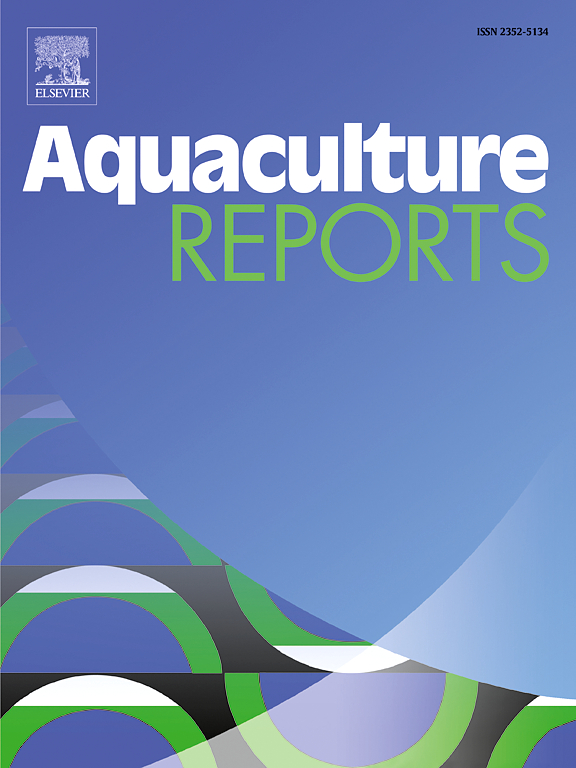Comprehensive profiling of gut bacterial communities in hybrid red tilapia with and without streptococcosis
IF 3.2
2区 农林科学
Q1 FISHERIES
引用次数: 0
Abstract
The gut microbiome is crucial in regulating nutrient metabolism, immune responses, and defense mechanisms against diseases. This study aimed to comprehensively compare bacterial community profiles within the foregut, midgut, and hindgut regions of red tilapia fish with and without streptococcosis. Red tilapia (Oreochromis niloticus × Oreochromis mossambicus) with and without streptococcosis were collected from a river cage culture farm in Central Thailand. The infected streptococcal isolates were confirmed by 16S rRNA sequencing. The 16S amplicon was sequenced in gut microbiome samples from healthy and diseased groups to analyze the bacterial composition profiles associated with red tilapia with and without streptococcosis. The alpha diversity of bacterial communities in the gut microbiome was significantly higher in the healthy group than in the diseased group. Beta diversity indicated distinct differences in bacterial communities between groups. Taxonomical profiling revealed Proteobacteria followed by Fusobacteria as the dominant phyla and Cetobacterium as the dominant genus in the gut of both groups. Linear discriminant analysis effect size indicated Vibrio, Plesiomonas, Aeromonas, Streptococcus, Chitinibacter, and Edwardsiella as relatively more abundant in the diseased group. These groups could serve as baseline populations associated with streptococcosis in red tilapia. In contrast, Romboutsia, Clostridium sensu stricto 1, Turicibacter, Epulopiscium, Bacillus, Streptomyces, Hyphomicrobium, and Nocardioides were more abundant in the healthy group. This study provides insights into the bacterial community profiles associated with streptococcosis in the gut of red tilapia. It enhances our understanding of gut bacterial communities in red tilapia and offers a baseline perspective on bacterial populations associated with streptococcosis, which could benefit future treatment and diagnostic strategies.
求助全文
约1分钟内获得全文
求助全文
来源期刊

Aquaculture Reports
Agricultural and Biological Sciences-Animal Science and Zoology
CiteScore
5.90
自引率
8.10%
发文量
469
审稿时长
77 days
期刊介绍:
Aquaculture Reports will publish original research papers and reviews documenting outstanding science with a regional context and focus, answering the need for high quality information on novel species, systems and regions in emerging areas of aquaculture research and development, such as integrated multi-trophic aquaculture, urban aquaculture, ornamental, unfed aquaculture, offshore aquaculture and others. Papers having industry research as priority and encompassing product development research or current industry practice are encouraged.
 求助内容:
求助内容: 应助结果提醒方式:
应助结果提醒方式:


